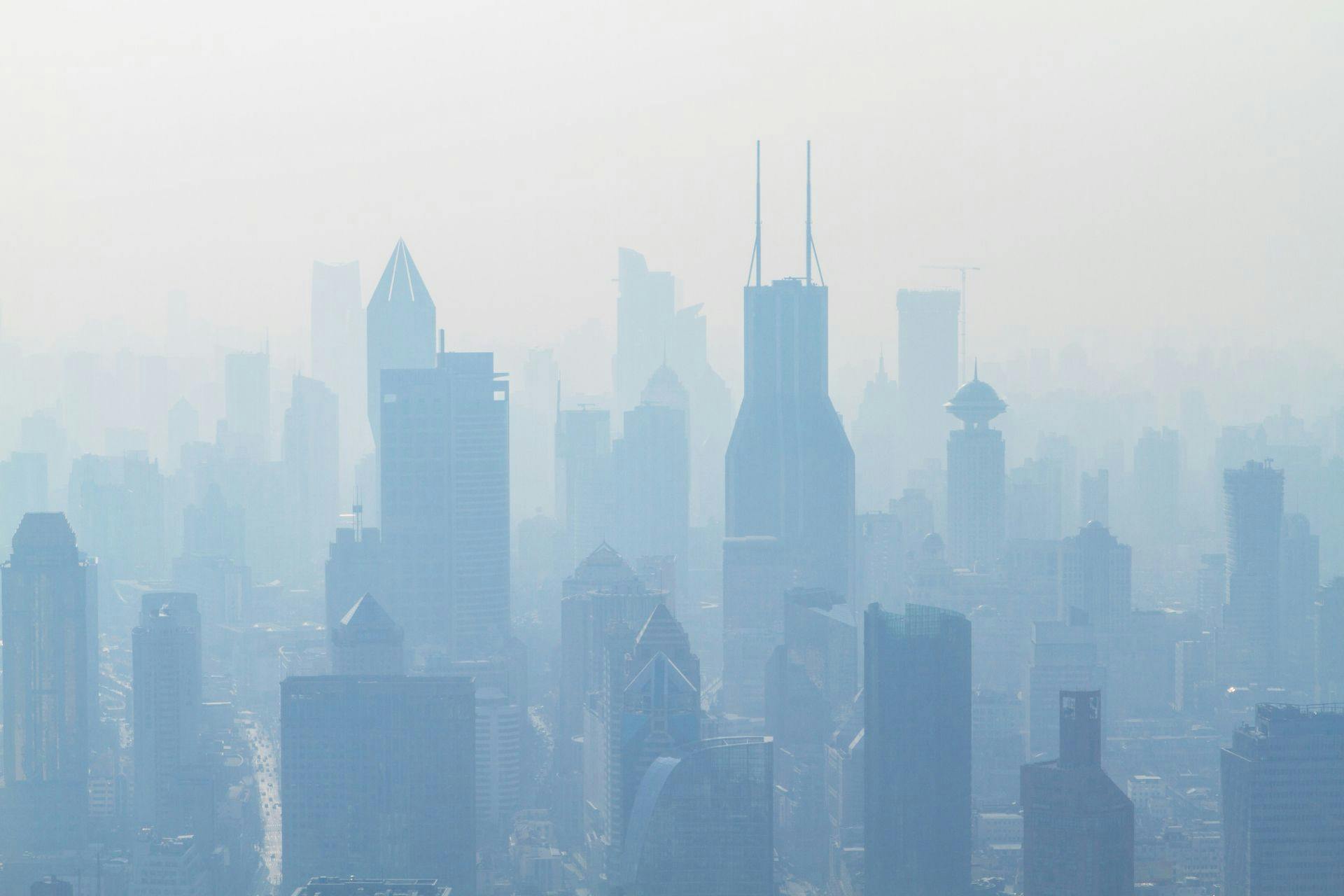

Gordon WatsonChief Executive Officer of AXA Asia & Africa
June 24, 2022
Climate change poses an immediate health crisis for Asia
The greenhouse gases that contribute to climate change also pollute our air, costing millions of lives each year, says AXA Asia and Africa CEO Gordon Watson.
4 minutes
Original Content: CNA
The worldwide trend of governments, businesses and other large organisations pledging net-zero carbon emissions to combat climate change is a worthy one. Faced with weather extremes such as recent heatwaves in India and Pakistan, more are recognising the existential risk posed by global warming.
But the focus on net-zero pledges can obscure the more immediate health threat of air pollution, which is the result of the same industrial and urban activities that contribute to climate change.
According to the World Health Organization (WHO), 99 per cent of people are exposed to hazardous levels of pollutants such as particulate matter, carbon monoxide, ozone and nitrogen dioxide.
Air pollution has long been associated with asthma, diseases of the heart and lungs and certain types of cancer. Some 7 million people a year die prematurely of pollution-related causes.
Many of the same pollutants that harm us in the short term also cause the long-term effects of global warming. Carbon dioxide, the most prevalent greenhouse gas, comes largely from the combustion of fossil fuels and agricultural burning.
Those same processes produce soot, or PM2.5 – tiny particles 2.5 micrometres or smaller that penetrate the lungs and enter the bloodstream, elevating the risk for heart failure.
Methane, a greenhouse gas 80 times more potent than carbon dioxide at warming the planet, leads to the formation of ground-level ozone, a key component in smog and an oxidant that can lead to lung damage.
The links between greenhouse gas emissions and air pollutants show climate change isn’t just a long-term threat – it is a health crisis. While net-zero pledges should lead to a reduction in dangerous pollutants, their timeframe is often a matter of decades. China has pledged to go carbon neutral by 2060, for example.
It is imperative the world cracks down on air pollution now – and in doing so, accelerate climate action.
A suffocating problem across Asia
Air pollution is widespread across Asia, which contains 48 of the world’s 50 most polluted cities according to the Swiss company IQAir. Coal-fired power plants impact air quality across mainland China, while vehicular emissions and biomass combustion choke Indian cities.
In Southeast Asia, farmers in Indonesia, Thailand and Malaysia clear land and burn agricultural waste despite restrictions on open burning. These fires contribute up to 30 per cent of human-made emissions, and cause the region’s perennial haze every dry season.
People in poor and middle-income countries tend to face more exposure to pollutants while having less access to good healthcare. This contributes to a large-scale deficit of health equity – the ability of everyone to attain better health outcomes regardless of income, race, gender and age. Global health equity is critical to continued growth and progress.
But like climate change, air pollution is a transboundary threat: Not a single country meets WHO air quality standards. Singapore residents would gain an average of 3.8 years of life expectancy if the city’s air quality adhered to WHO recommendations.
Fortunately, moves to reduce harmful air pollution can be effective almost immediately. A growing body of research on the effects of the pandemic has found sharp declines in particulate air pollution and nitrogen dioxide in the months when factories went silent and people stayed home.
Targeting pollution produces quick and tangible results
Ramping up action against the health threat of climate change cannot wait. In addition to the human toll air pollution exacts, there is a staggering financial cost. Greenpeace estimates that worldwide, air pollution costs us US$8 billion a day, or 3.3 per cent of the world’s gross domestic product, through a combination of healthcare costs and lost productivity.
China and India combined bear a cost of more than US$1 trillion annually, while nearly all countries in Southeast Asia face costs of more than 2 per cent of their GDP.
This means that alongside our long-term climate targets, governments and big business should also work toward practical solutions that will actively limit emissions. This will come from a combination of forward-thinking policies as well as up-front investment.
Asia appears to have gotten the message. The region in 2021 pulled ahead of Europe to lead the world in lending to projects designed to reduce pollution, with a fourfold increase from a year earlier to US$56 billion.
Those investments include government measures such as Singapore’s subsidising of environmental loans and the People’s Bank of China offering low-interest loans to companies involved in clean energy like solar and wind.
Despite being the world’s biggest polluter, China also offers an example of a government drastically reducing emissions through a constellation of policy measures. Premier Li Keqiang’s war on pollution
, declared in 2014, has led to a 40 per cent reduction in overall pollution in the country in 2020 compared to 2013 levels.
The measures included large cities restricting the number of cars on the road, state-run industries reducing capacity and regulators prohibiting the construction of new coal power plants in certain regions.
Such drastic measures won’t be possible in many jurisdictions, but as 2020’s economic slowdown also goes to show, curbs on industrial activities lead to quick and tangible results in reducing pollution.
Inaction on air pollution will cost dearly in the future
Besides governments, insurers can play a part too in addressing air pollution and climate change by restricting underwriting on coal and oil sands industries, which limits the scope of polluting companies’ operations.
Initiatives to that effect are underway, such as the UN-led Net-Zero Insurance Alliance that AXA chairs, where 20 leading insurers worldwide have committed to decarbonising their underwriting portfolios by 2050.
Companies must look beyond the limited perspective of returns on investments in polluting sectors like coal to consider how climate change and air pollution lead to higher claims across their whole business, from natural disasters to property insurance to health. Focusing on these impacts on our quality of life will help spur further efforts across society.
Reducing emissions and growing health equity will take real action and significant investment. Governments and businesses must work together to make that action possible, not only bringing about cleaner air but also better health for all – ahead of long-term net-zero goals.



